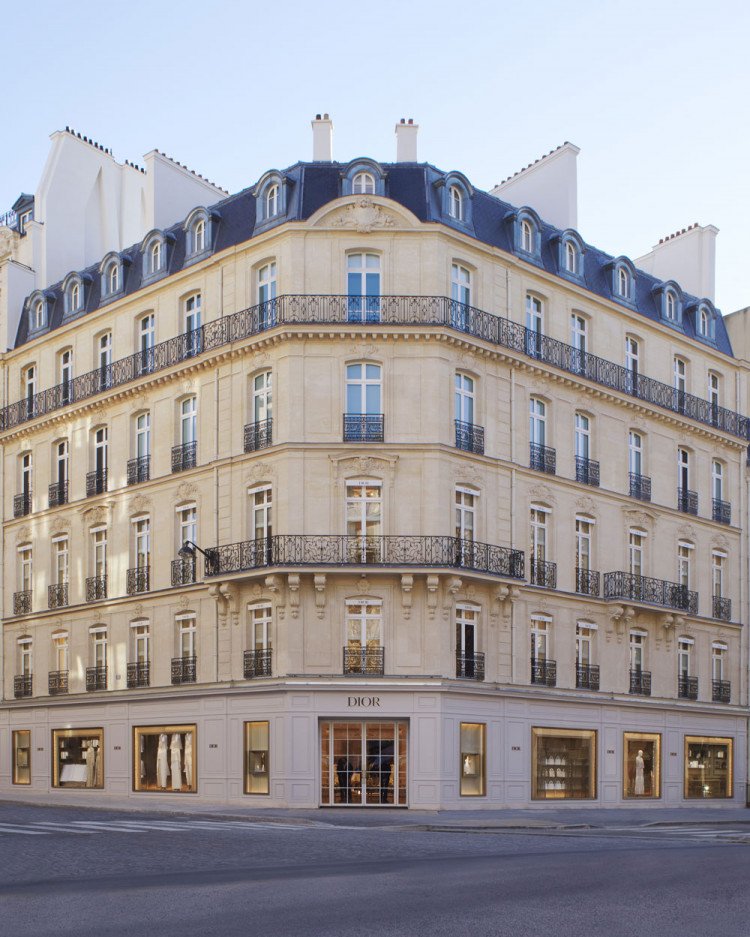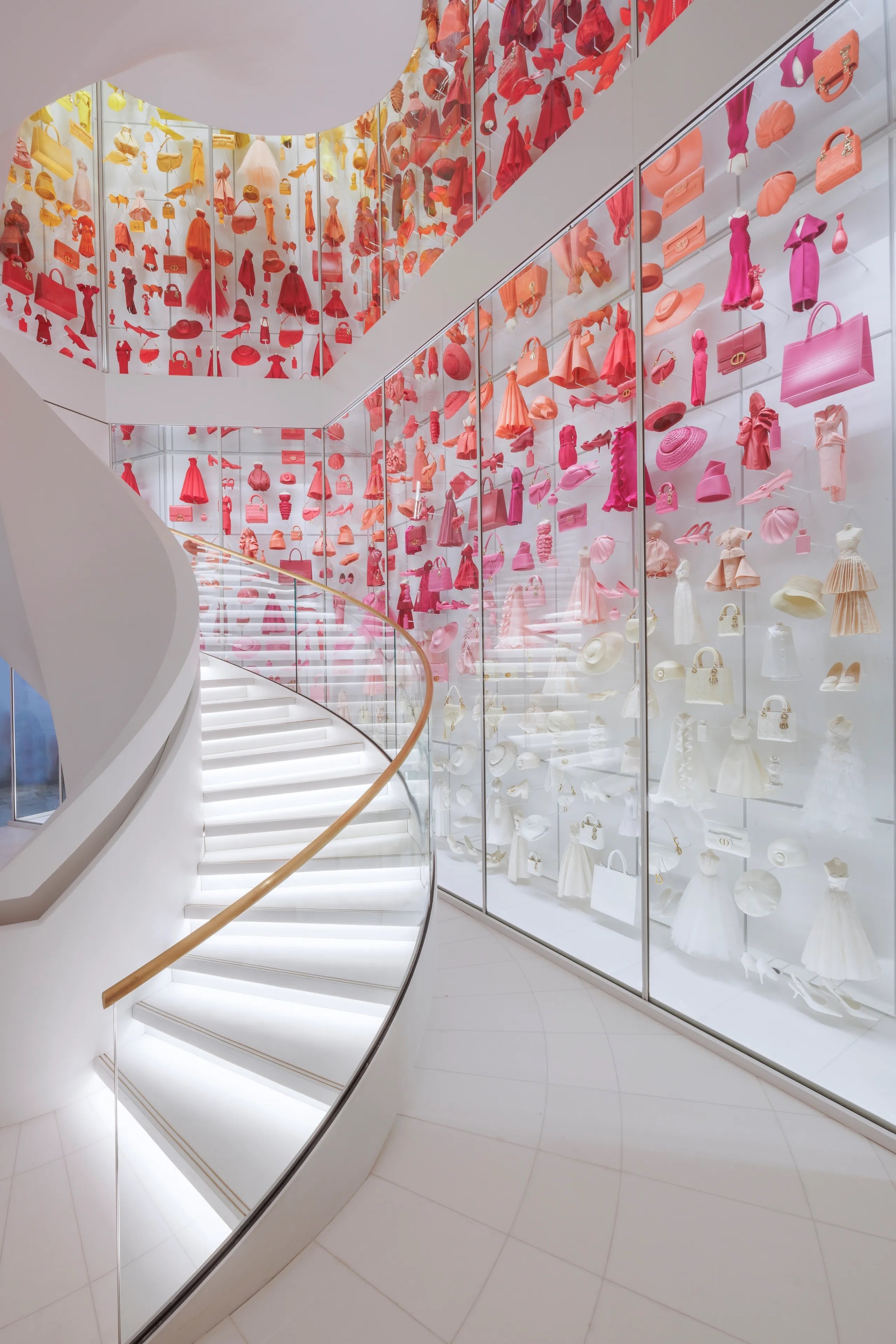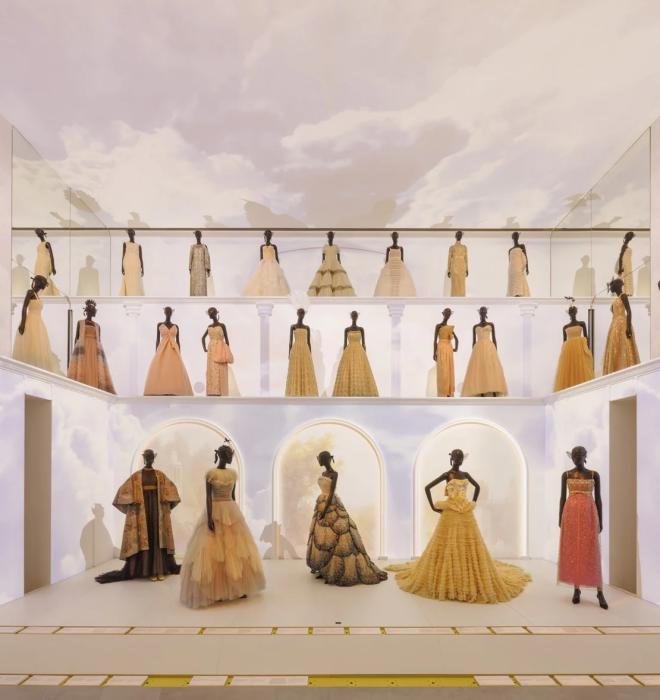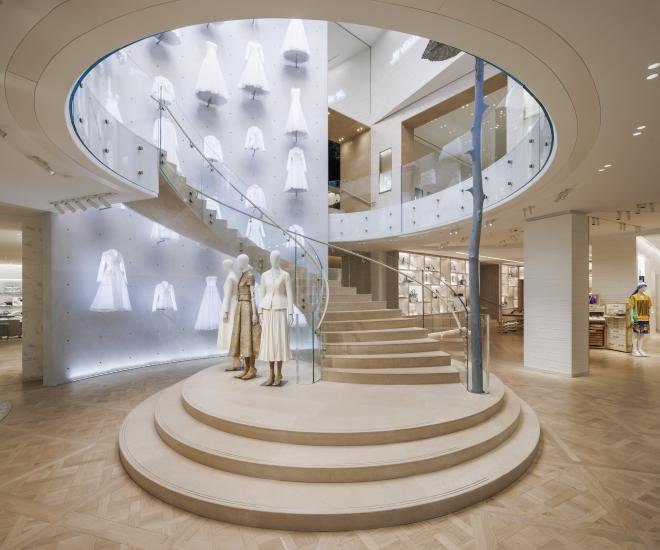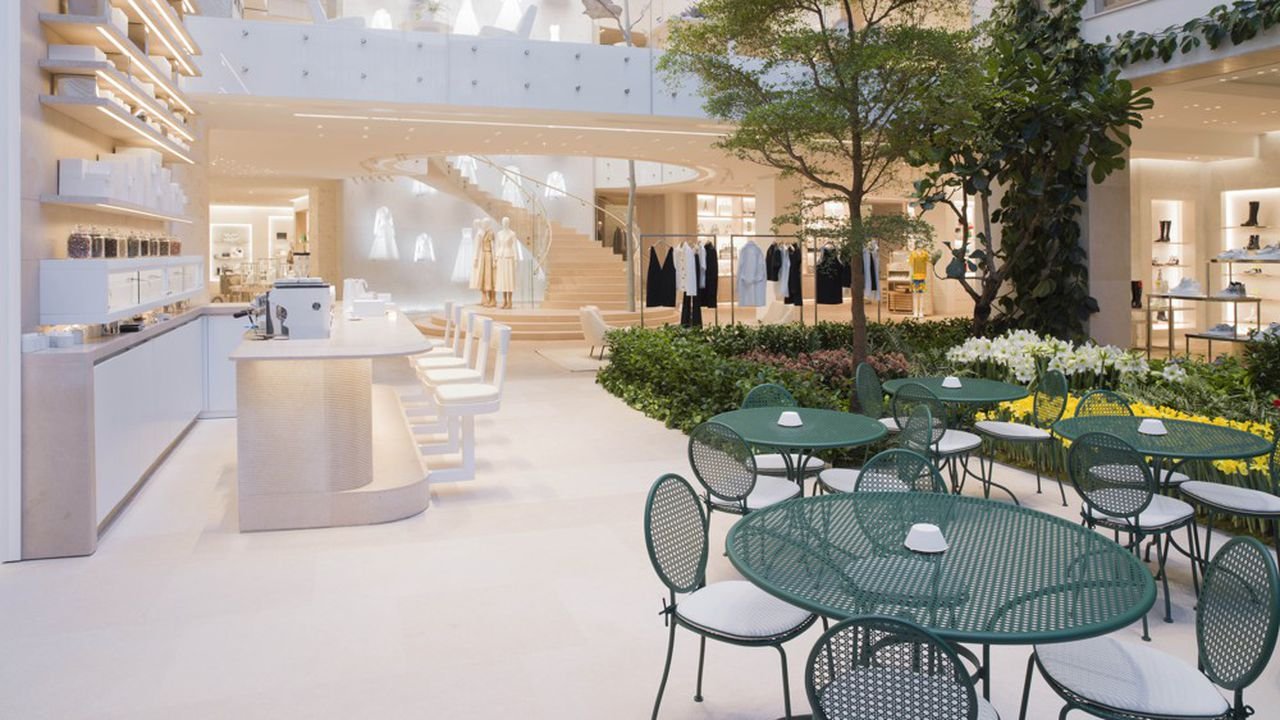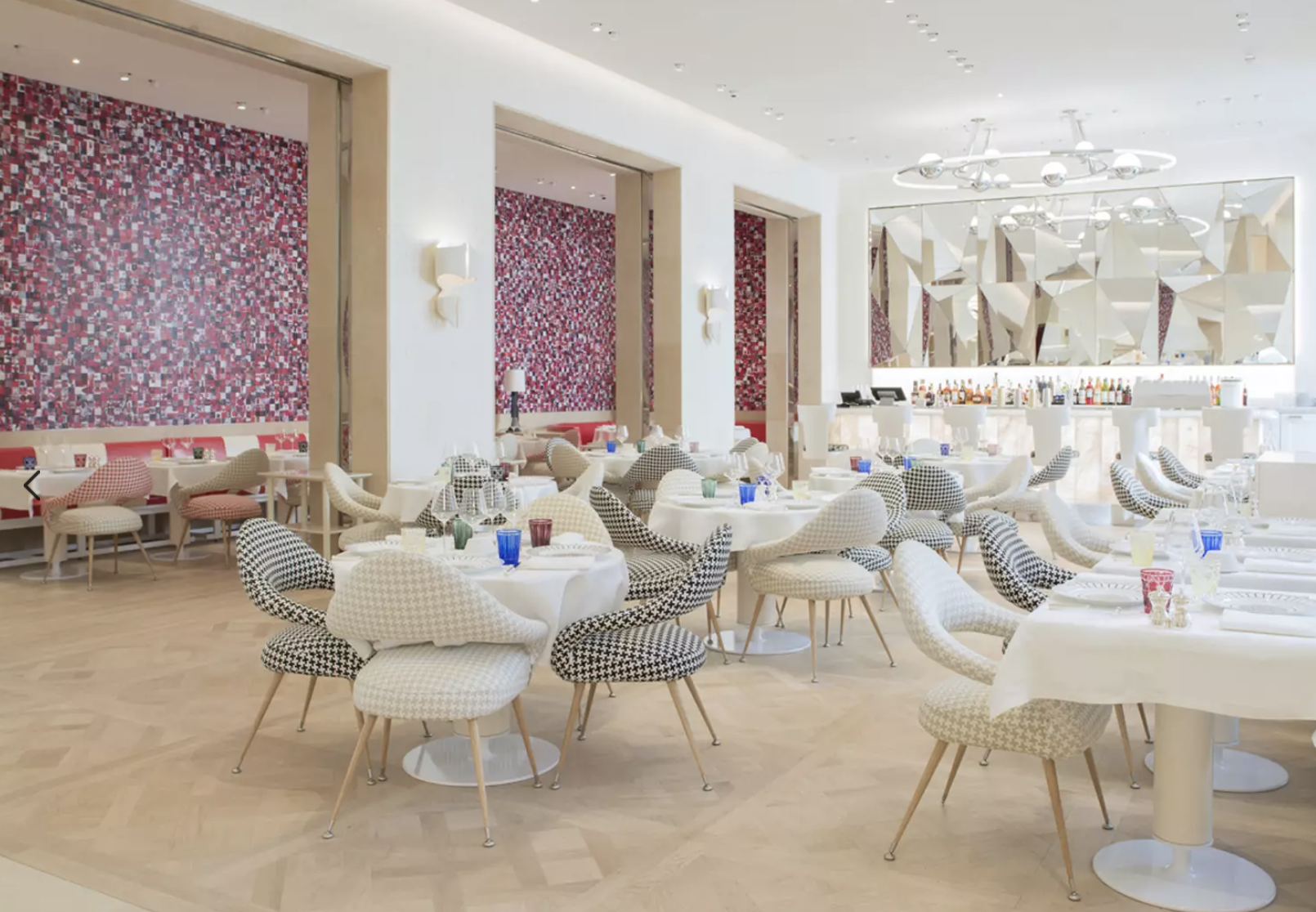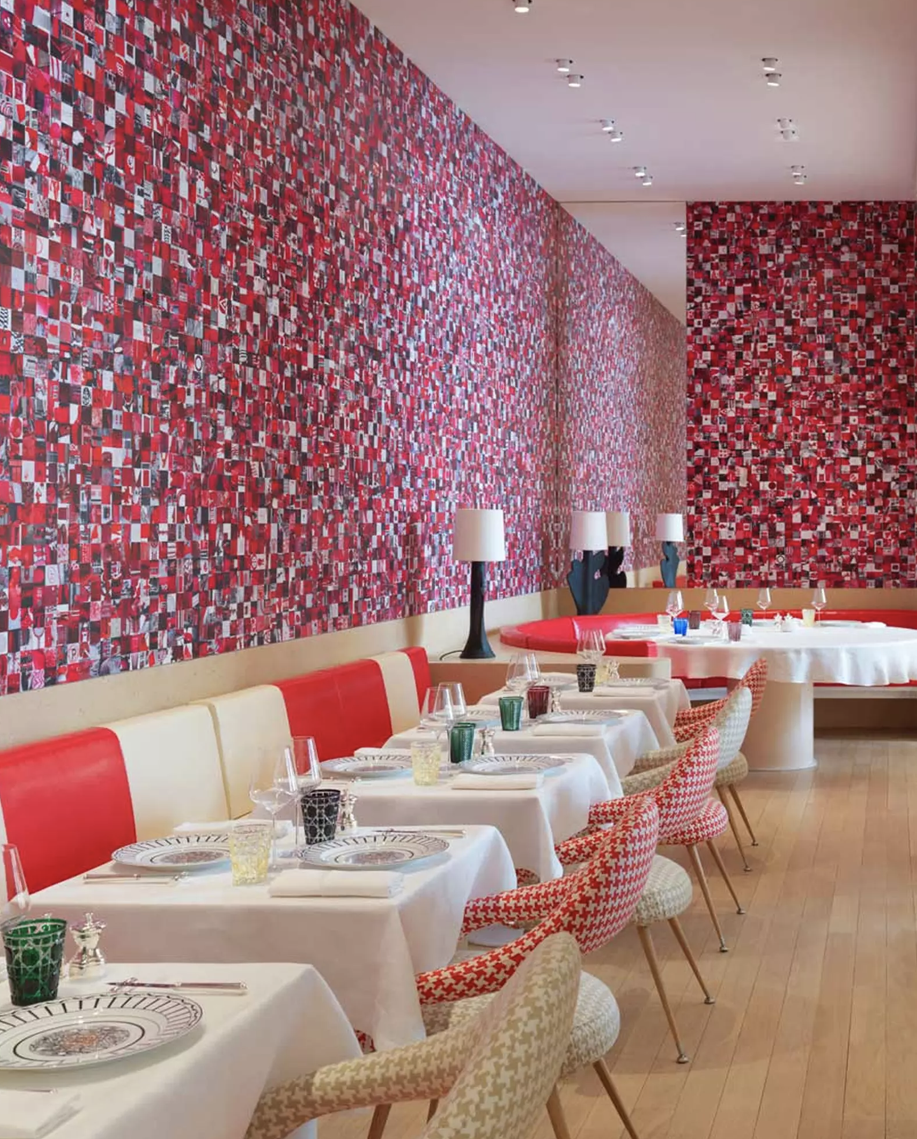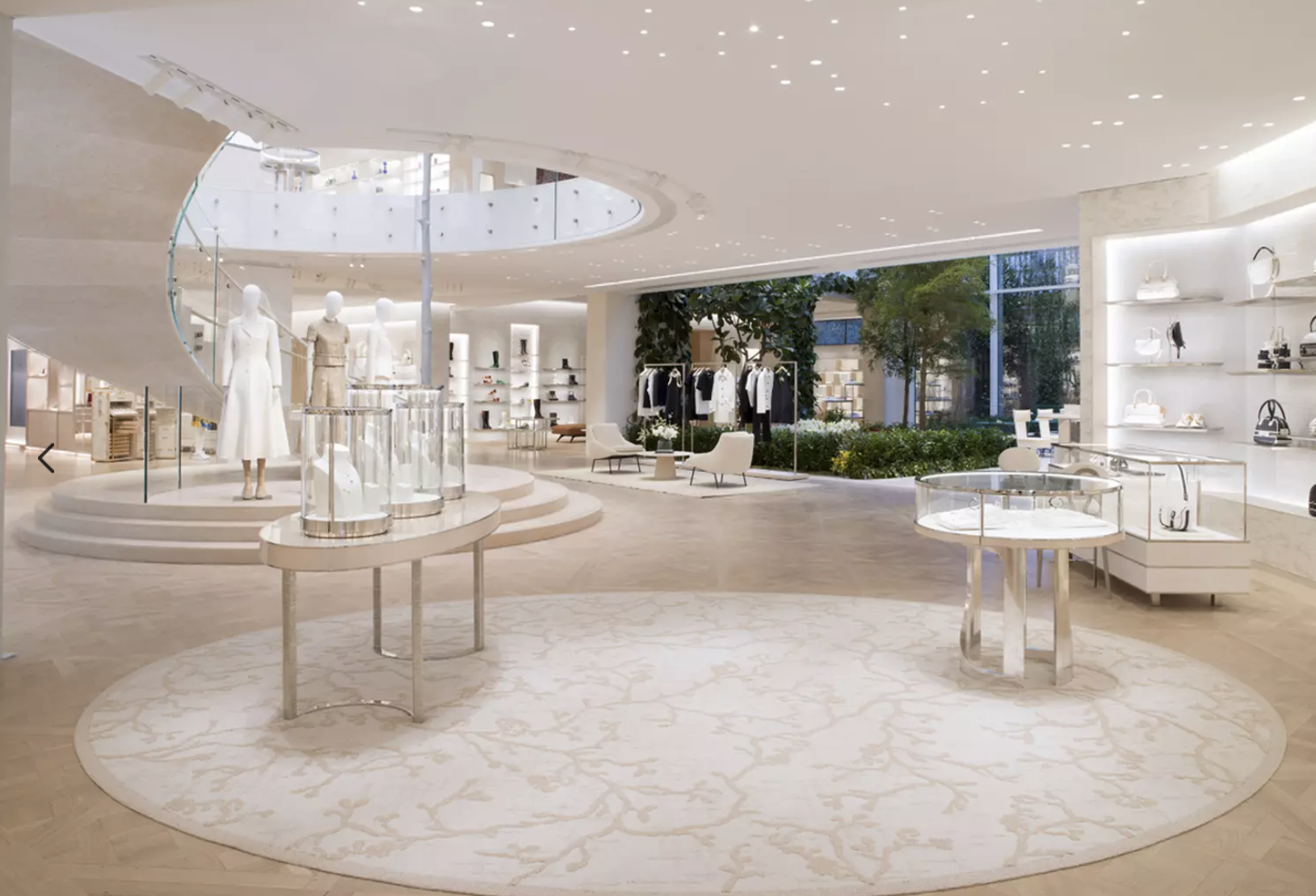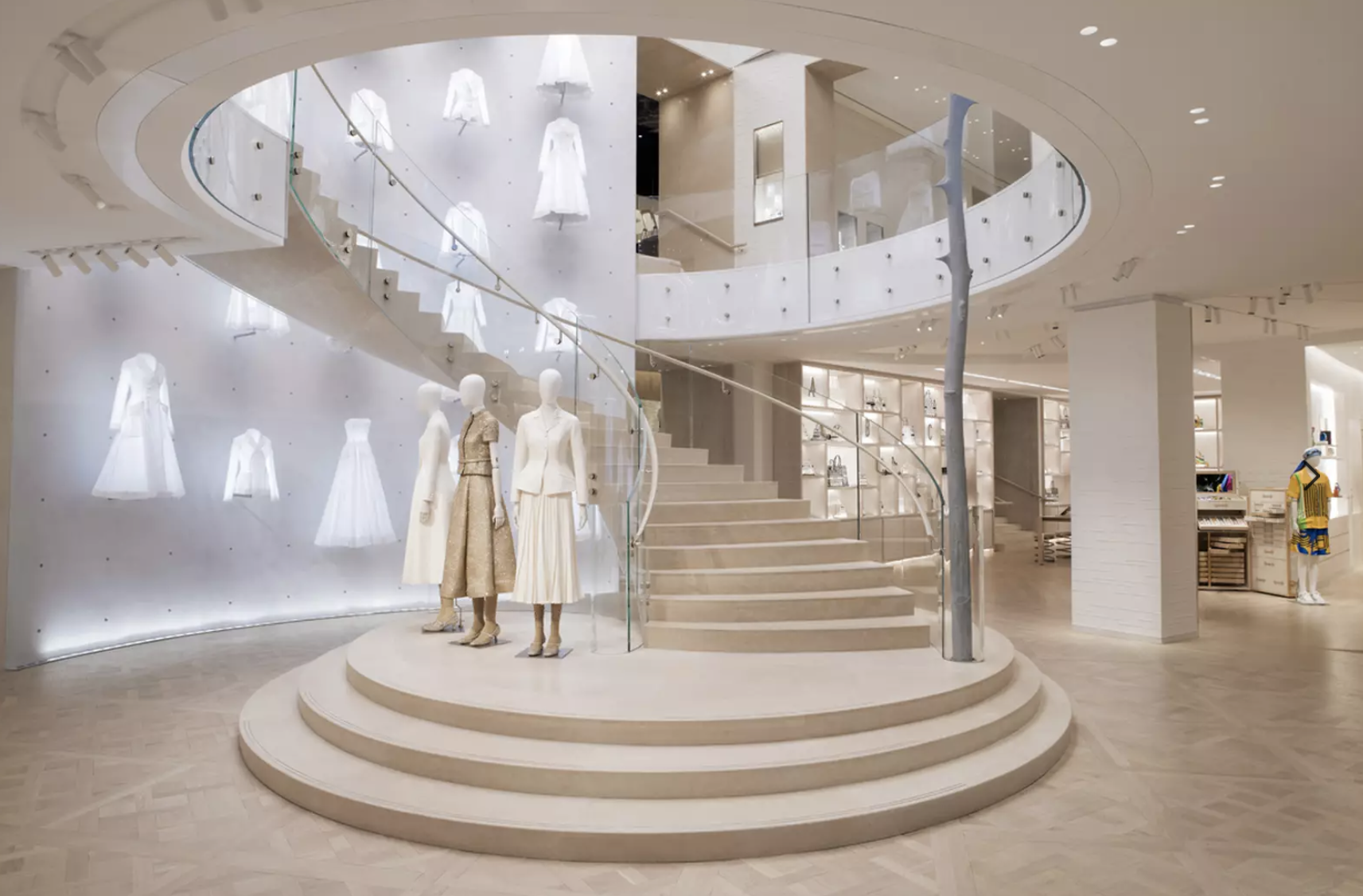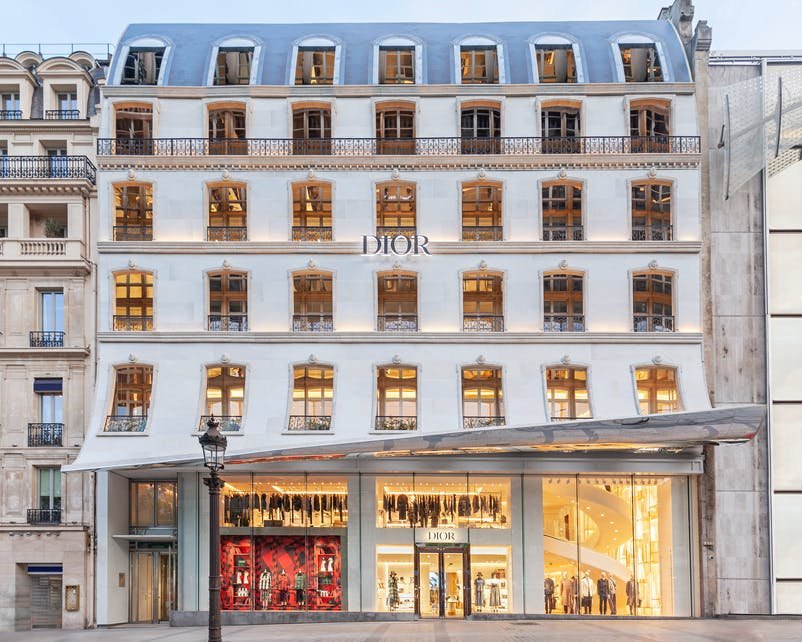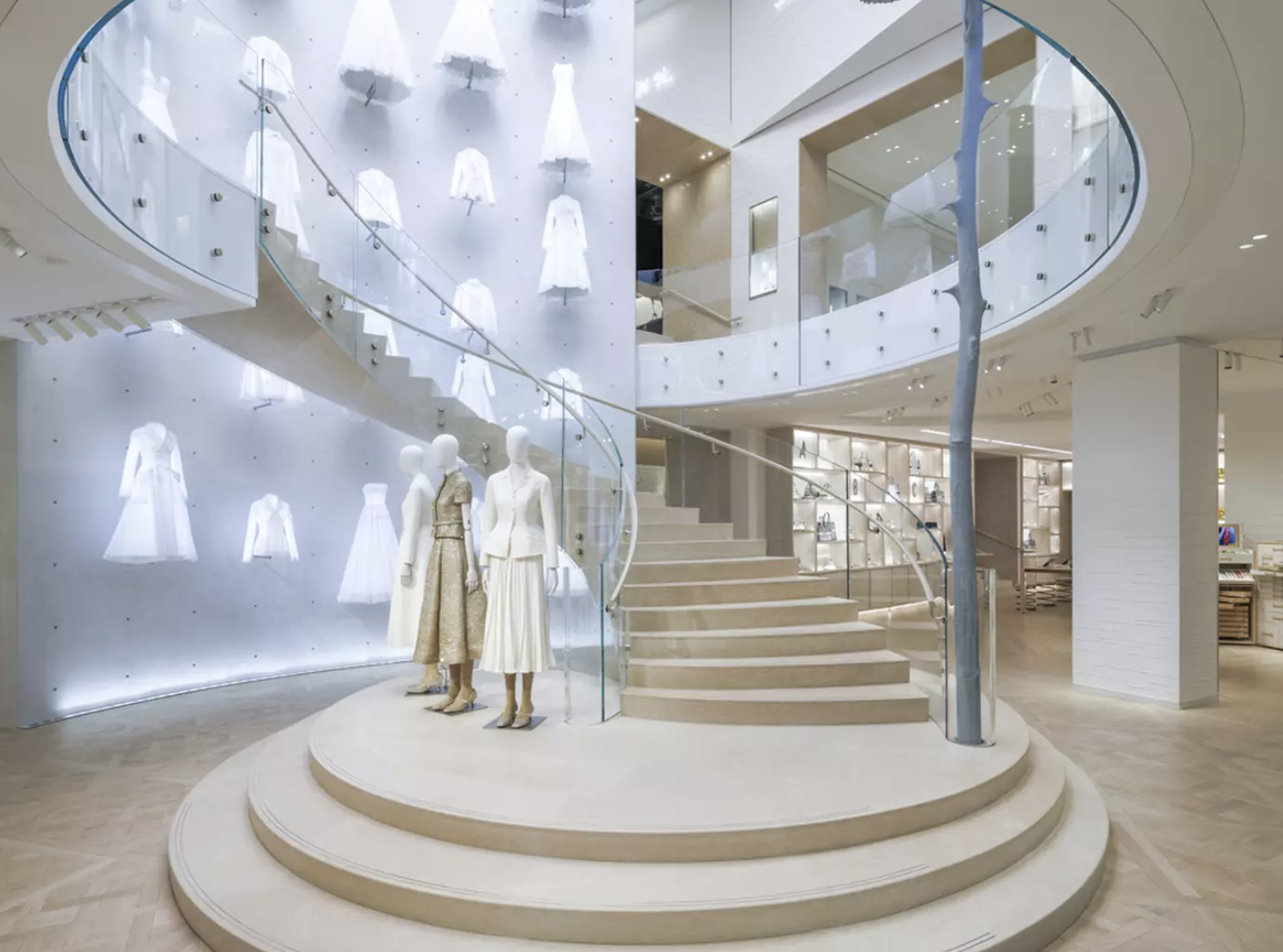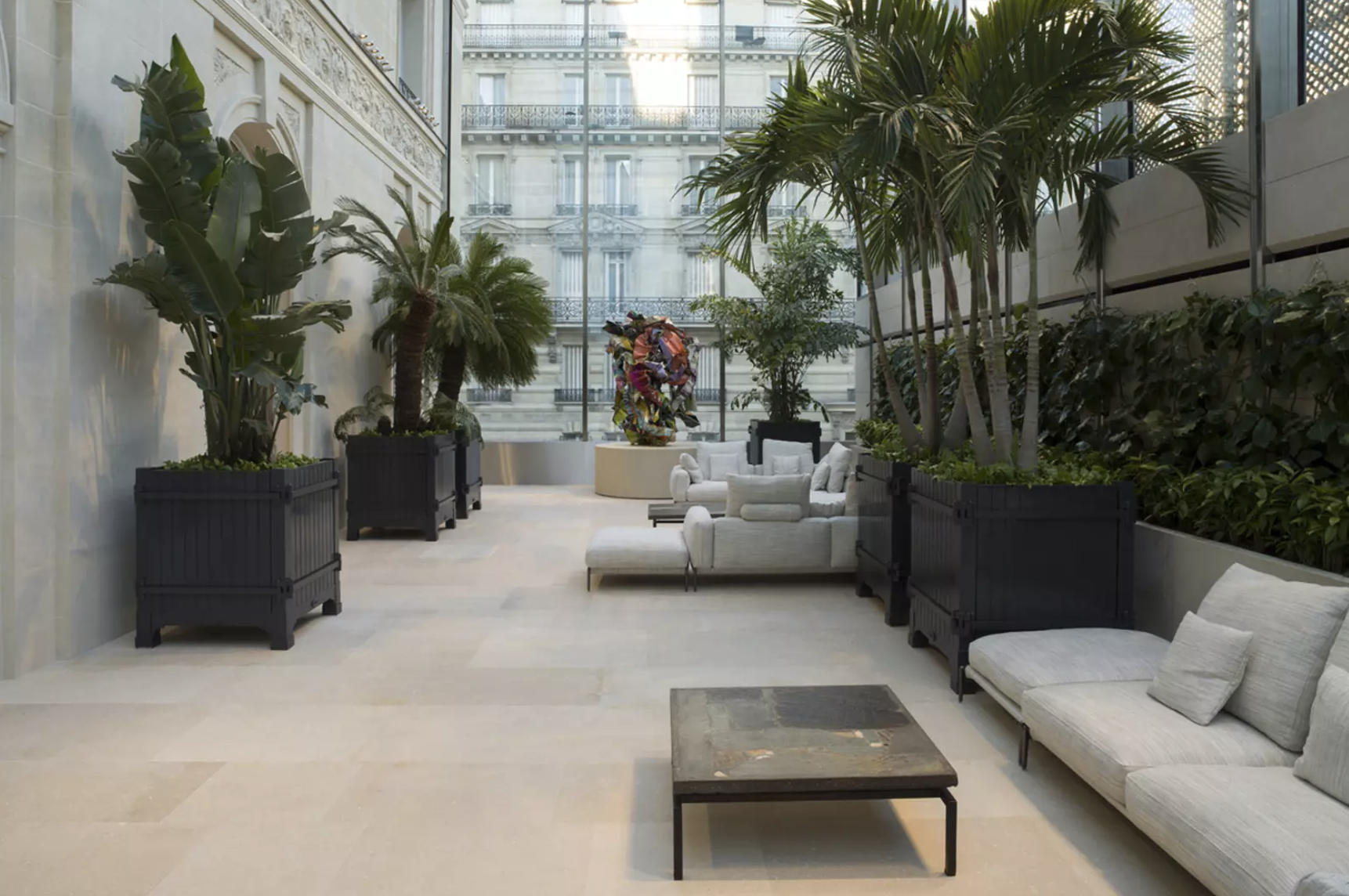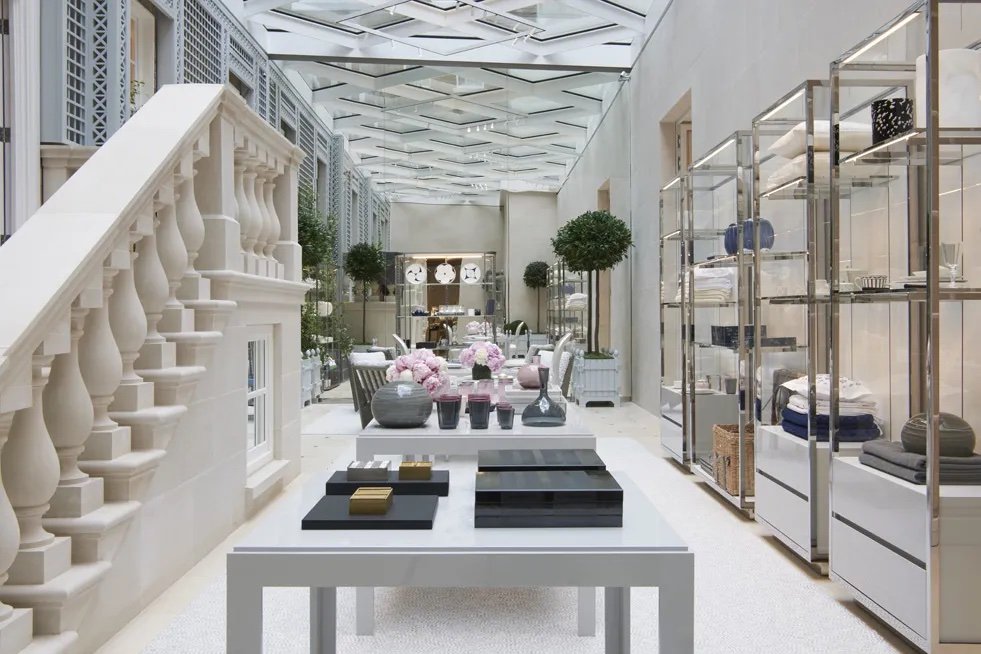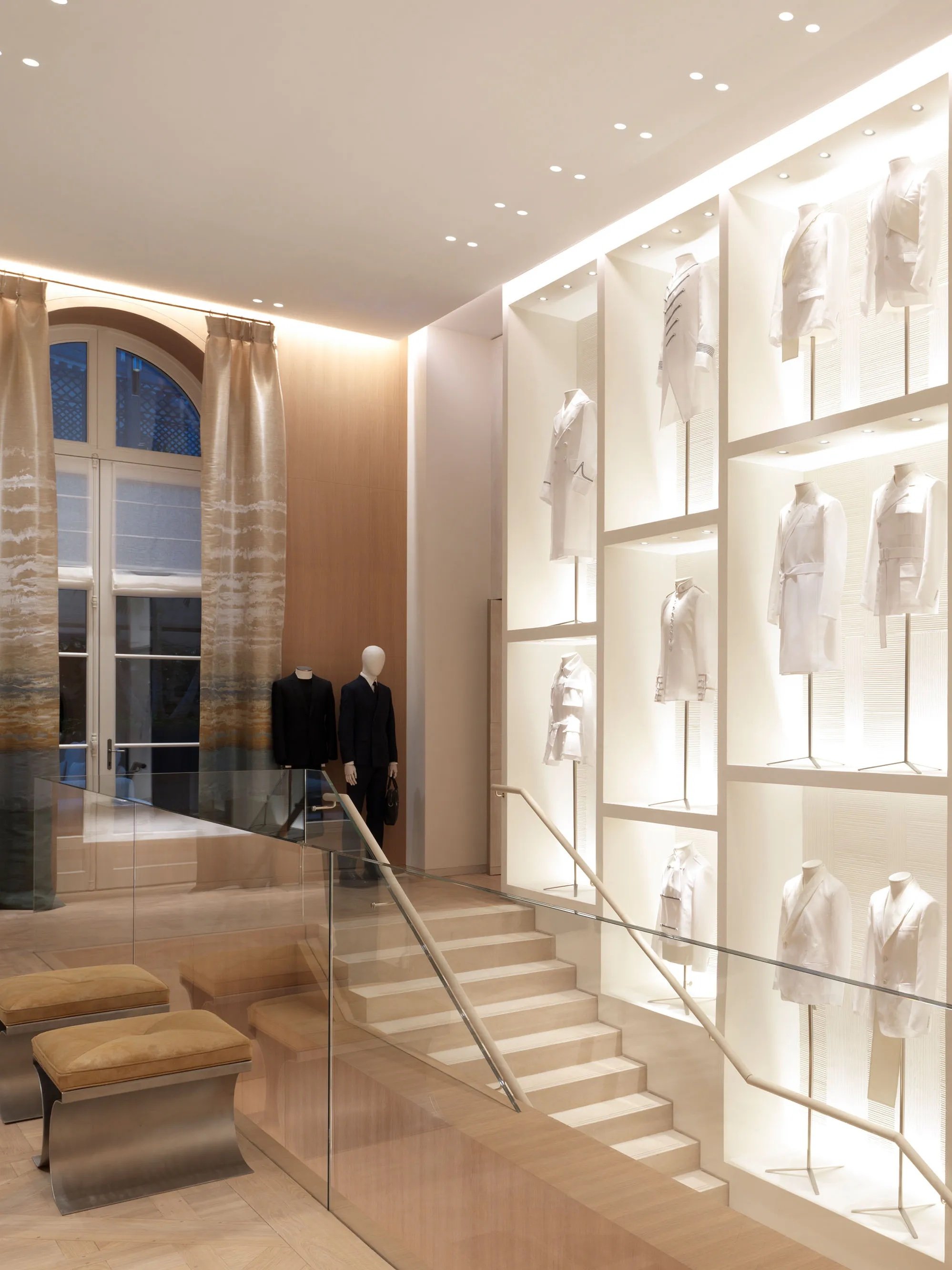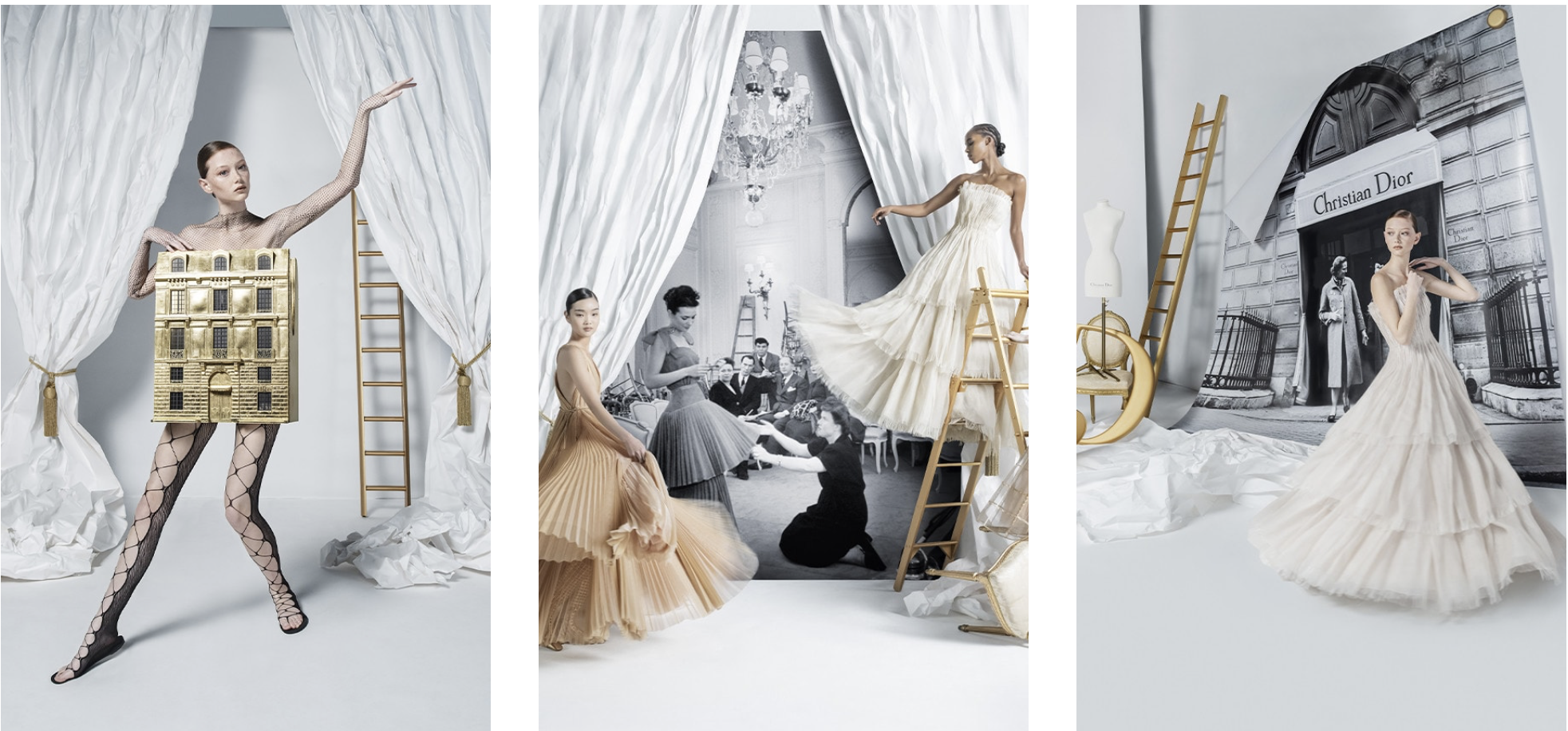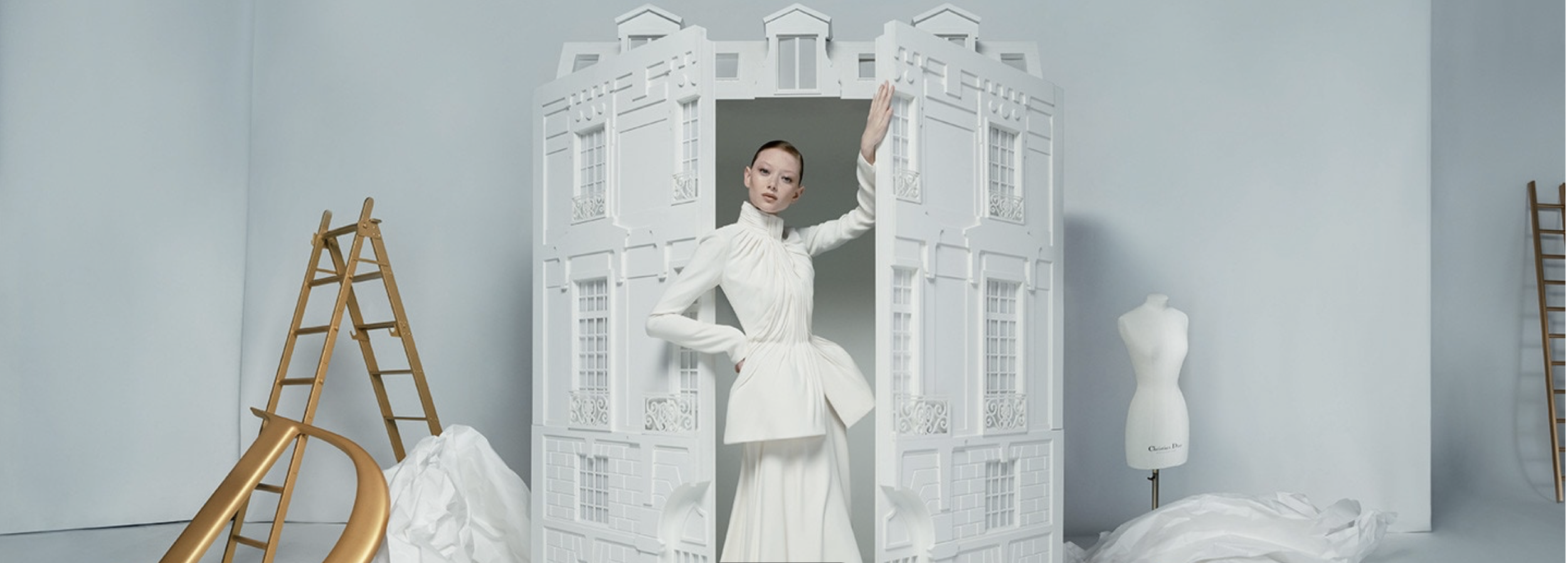DIOR 30 Montaigne is Open!
FROM WWD : — Where in the world can you relax in an onyx marble bathtub, have a facial, enjoy a meal, order made-to-measure clothes and visit a museum — all under one roof?
Those are just some of the services on offer at Dior’s historic flagship at 30 Avenue Montaigne in Paris, which is set to reopen on Sunday after more than two years of renovations.
“It’s not just a flagship — it’s a universe that we present,” Pietro Beccari, chairman and chief executive officer of Christian Dior Couture, told WWD. “In reality, we should find a new name for it, because it’s a complex such as does not exist in the world, so it’s really a clear point that will mark the difference between us and our competitors.”
The building, which spans nearly 108,000 square feet, houses the French luxury brand’s largest boutique worldwide alongside La Galerie de Dior, the biggest permanent exhibition space dedicated to fashion in the hands of a private house. It’s home to rotating displays and preserved historic spaces, such as the original office of founder Christian Dior.
Also under the same roof are the haute couture ateliers, which have called the building home ever since Dior inaugurated the space in December 1946, just weeks before presenting his first collection and launching the revolutionary New Look.
For the first time, they will be joined by the high jewelry workshop, where customers can have precious stones mounted on custom-designed pieces. Meanwhile, the historic salon where the first fashion shows were held will now host dinners and special events.
In addition, 30 Montaigne is home to the Monsieur Dior restaurant and a Dior pastry café, housed in an atrium space filled with towering tropical trees and a bed of flowers. Both are run by French chef Jean Imbert, who also oversees the Café Dior adjacent to the exhibition gallery.
There is an alcove dedicated to beauty treatments, and last but not least, La Suite Dior, a private apartment whose keys give guests the full run of the building, with a dedicated staff of six to eight people around the clock, ranging from chefs to personal shoppers.
“It will be on command, and if you wake up because you’re jet-lagged and you feel like going to visit the museum in your bathrobe, you’ll be able to do so,” Beccari said. “There will be always someone awake. I’m fascinated by the thought that 30 Montaigne will never sleep.”
The project was orchestrated by architect Peter Marino, who stuffed the space with original artworks, including a suspended installation, resembling falling paper leaves, by Paul Cocksedge in the entrance rotunda of the store, and a 26-foot-tall rose sculpture by Isa Genzken, which towers over the circular staircase in the center of the boutique.
“I’ve never done such a complex construction project during a worldwide pandemic,” Marino said in an email interview. He used more than 100 materials, from white stucco textures to custom-embroidered silks and cerused oaks, and worked with Belgian landscape architect Peter Wirtz on the three gardens that punctuate the space.
“One of the most exciting aspects of the Avenue Montaigne project is that it is a journey through the inner essence of the brand — expressed through the architecture, interior design and experience of each space,” he said.
“It’s not one idea throughout, but rather, walk-through spaces that tell a story, that keep the customer engaged and emotionally connected with Dior from start to finish. It’s about creating environments that allow the customer to explore the brand in a beautiful, immersive, delightful way,” Marino added.
Beccari said he came up with the idea within the first 100 days of arriving at Dior in 2018. He was understandably nervous about presenting it to Bernard Arnault, chairman and CEO of parent company LVMH Moët Hennessy Louis Vuitton, as it involved not only closing the brand’s number-one boutique, but also temporarily relocating the couture workshop.
“It was a bit crazy, but you know, finally, I think I met the Mr. Arnault that not a lot of people know, the one that is not really so rational and so calculating every move, but someone that is able to envision something and clearly decide with his stomach, with his intuition,” the Italian executive recalled.
“I was lucky enough that he saw the vision, he understood it and he followed me, and I must say that today, when we go through it, we are both very, very proud of what we did,” he added.
Photo above: Tim Walker for Dior
There is also a limited-edition bag, in the shape of the building, designed with artist Penny Slinger, who collaborated with Dior womenswear designer Maria Grazia Chiuri on her fall 2019 haute couture line. It’s inspired by a gold concept outfit, also modeled after 30 Montaigne, that appeared in that show and is now on display in the gallery space.
It’s just one example of the many synergies between the different sections of the complex, which is actually made up of several adjoining buildings that literally provide bridges between the past and present via a number of secret passageways.
“It’s important to know where we come from, and I believe that luxury brands are a perfect mix between tradition and modernity,” Beccari said. “Mr. Dior never opened a pastry shop, but I’m sure that if he was here to ask, he would say absolutely yes, because he was a bon vivant. So there is a tradition and there is a modernity represented in the building, and I think it’s a good equilibrium.”
Nowhere is the history more alive than in La Galerie de Dior, which is headed by Olivier Flaviano, the former director of the Yves Saint Laurent Museum in Paris. Its set design is by interior architect Nathalie Crinière, who previously conceived the brand’s 70th anniversary retrospective at the Musée des Arts Décoratifs in 2017.
Like the boutique, the gallery stretches more than 21,500 square feet, divided into 13 thematic spaces housing 130 haute couture outfits, 33 toiles and between 150 and 200 accessories, in addition to scores of previously unseen archive documents. It’s open every day except Tuesday from 11 a.m. to 7 p.m., with admission costing 12 euros.
Visitors head up to the third floor by lift, and exit down a spiral staircase with a spectacular decor made up of 1,874 color-coded objects — sure to become catnip for Instagram. These include 452 miniature dresses and 1,422 3D printed objects, including small-scale models of the Saddle and Lady Dior handbags.


